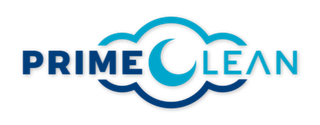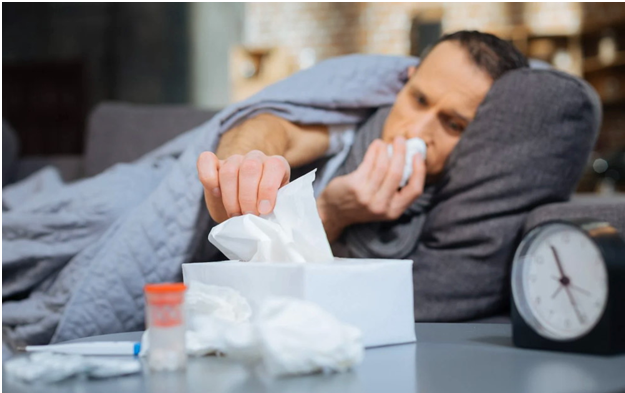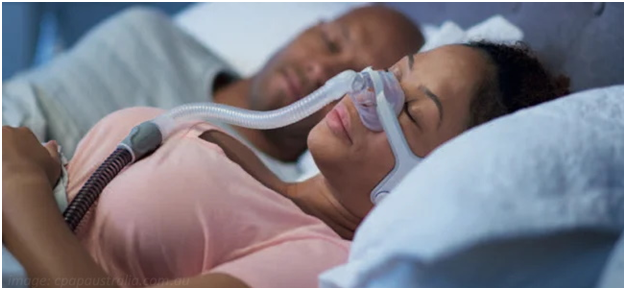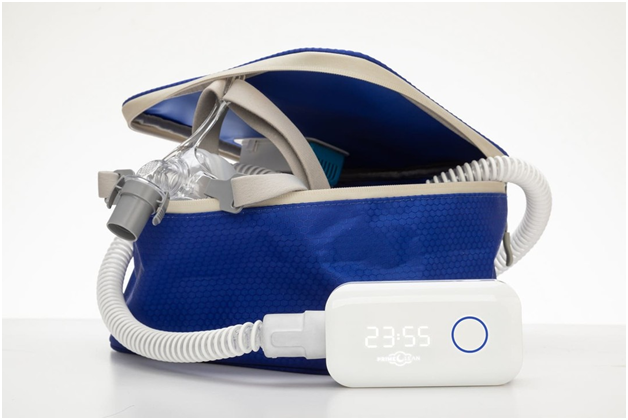Using CPAP While Having A Cold
Jan 21, 2022 by PrimeClean
Using CPAP therapy, sleeping with the face mask can be discomforting to say at least… But having a cold, stuffy nose, sore throat, on top of all that, well that's a next-level discomfort. But discomfort aside, is it OK to use CPAP while having a cold? Is an increased quantity of germs in airways and CPAP equipment an additional risk? Is cpap ozone sanitizer (CPAP Ozone Disinfector) a good enough solution to keep equipment clean, and how often should it be used? Check out what we found on this topic and what are the best practices and suggestions for using CPAP while having a cold…
Having a cold and quality sleep
Sleep foundation defines sleep as an essential function that allows your body and mind to recharge; Healthy sleep also helps the body remain healthy and stave off diseases. Knowing this, it is easy to understand that having a cold, stuffy nose (nasal congestion), having a hard time breathing in general, will affect the sleeping process. Adding a CPAP face mask into the "equation" doesn't help increase the comfort. Pharmacy and medicine are advanced enough to make fighting the symptoms of cold and flu fairly simple, so general discomfort caused by cold can be significantly reduced using medications.
How do sleep apnea and CPAP therapy go with a common cold? Does it have a positive or negative effect (or no effect at all)?
CPAP Therapy and Cold – Using CPAP During Cold Yes or No
We know that the symptoms of cold will have a negative effect on people with diagnosed sleep apnea, so using CPAP during that period should be helpful with the symptoms, but it’s not all that simple…
Let's see when to use CPAP and when to avoid it if a patient has common cold symptoms.
First thing is to make sure that the symptoms patient has are common cold symptoms (common cold can be caused by over 200 viruses, while flu is caused by influenza virus only)! We strongly suggest visiting or another way consulting a physician for diagnosis and therapy. Many might mistake common cold with flu, and although it is a similar condition and symptoms are often hard to differentiate.
According to CDC(Centers for Disease Control and Prevention) in general, flu is worse than the common cold, and symptoms are typically more intense and begin more abruptly.Colds are usually milder than flu. People with colds are more likely to have a runny or stuffy nose than people who have flu. Colds generally do not result in serious health problems, such as pneumonia, bacterial infections, or hospitalizations. Flu can have serious associated complications.
After it is confirmed that it is a case of common cold, in most of the cases CPAP therapy will have positive effects and is recommended for sleep apnea patients. Most problems come from a stuffy and blocked nose, which further influences breathing habits i.e. forces breathing through the mouth. This is especially problematic for patients that use a nasal mask or nasal pillow mask…or when the patient has a running nose. Here are 4 tips on how to use CPAP while having common cold symptoms:
1. Use elevated head or side position for sleeping. To make sure there is natural mucus drain avoid back sleeping position. Adding an additional pillow will help elevate the head and thus allow natural mucus drain, which will ease nasal congestion.Side sleeping will help to naturally open airways and ease breathing (use a CPAP pillow to make side sleeping possible without breaking the mask seal or tangling the tubes).
2. Use a (heated) humidifier. The humidifier is a part of CPAP equipment that is used to humidify the pressurized air. If possible, using a heated hose will have an even more positive effect. Warm air from a heated CPAP hose provides humidity and helps restore the moisture to mucus membranes and nasal passages, reduces nasal irritation, additional stuffiness, and in general, alleviates the symptoms.
3. Use a full face mask. As mentioned before, using a nasal mask or nasal pillow mask is complicated during the common cold. The nose gets congested and breathing through the nose (almost)impossible. In that case, the solution is using a full face mask which will help breathe more comfortably through the mouth.
4. Adjust CPAP Pressure or use APAP. In some cases, increased pressure may provide relief and open airways. Patients can increase pressure manually on their CPAP machine; or use an APAP machine that will automatically adjust air pressure,if needed and according. Before adjusting air pressure or using APAP, please make sure to contact your physician to consult.
An additional tip would be to use nasal spray (decongestants) commonly used for congested nasal airways.
When NOT to use CPAP with symptoms of a cold? If besides having confirmed common cold, and usual common cold symptoms, there are some additional symptoms such as ear pressure or pain, nosebleeds, shortness of breath,vomiting, then use of CPAP should be avoided!
Clean CPAP equipment regularly
Keeping CPAP equipment clean and sanitized is something every sleep apnea patient knows must be done regularly.During the cold, this should be emphasized. When a patient is sick, they are spreading more germs than when healthy, and by that CPAP face mask, connectors,tubes, and other accessories should be cleaned every day. It’s not that one can get sick from their own germs, it’s more that it is important to keep equipment clean, asit is still full of germs that can be spread to the environment.
We wrote many times before about how to clean CPAP equipment, manually (with water and soap) and automatically (with cpap ozone sanitizer, CPAP Ozone Disinfector)… And although manual cleaning is effective, we always recommend using one of the automatic cleaners, since they are more effective and time-consuming.
How to clean your CPAP equipment?
Cleaning CPAP equipment manually is an option. The process is fairly simple, and it doesn't require many goods,it's usually done with the everyday products, everyone has in their house. Mild soap, warm water, vinegar… Soap and warm water are used to clean the equipment,while the vinegar-water solution is used to disinfect it. It is important to thoroughly dry all the parts before connecting them and storing them. Manual cleaning is effective enough but it will take some time, and effort to do it,especially the drying part of it.
On the other hand, automatic cleaners are simple “plug and play”. They need no or minimal attention, they are fairly quick, and if using CPAP ozone sanitizer small and portable (UV cleaners however are not so small).
We recommend using Prime Clean® Cleaner CPAP Ozone Disinfector. As such, it uses ozone as a cleaning agent,and thus it is highly effective (kills 99.99% of bacteria, germs, and viruses).Using it is safe and extremely easy. You need to follow these steps:
1. Put CPAP mask, hose, and humidifier in the included Prime Clean® Bag
2. Connect Prime Clean® CPAP Cleaner and turn it on
3. Wait 30 minutes, how the sanitizing process lasts
The whole process is done within 30 minutes and it is as easy and simple, as explained above. The NEW N105 Prime Clean®Cleaner does not compromise efficiency and size, while it still improves all of its aspects.
Using CPAP while having a cold is not only OK, it is recommendable! But, it still has to be done after consultancy with a physician, as some aspects of it need to be cleared (at least for the first time).




